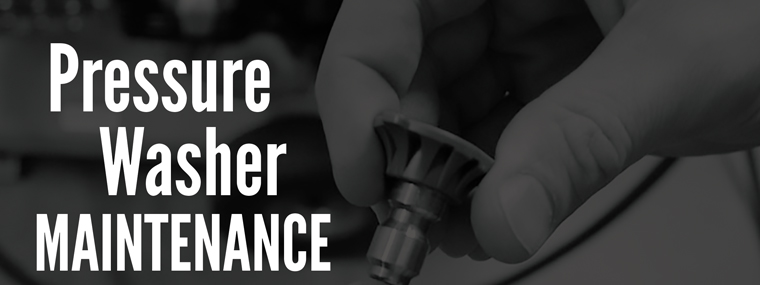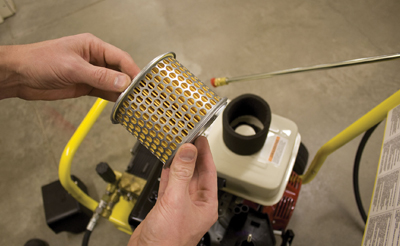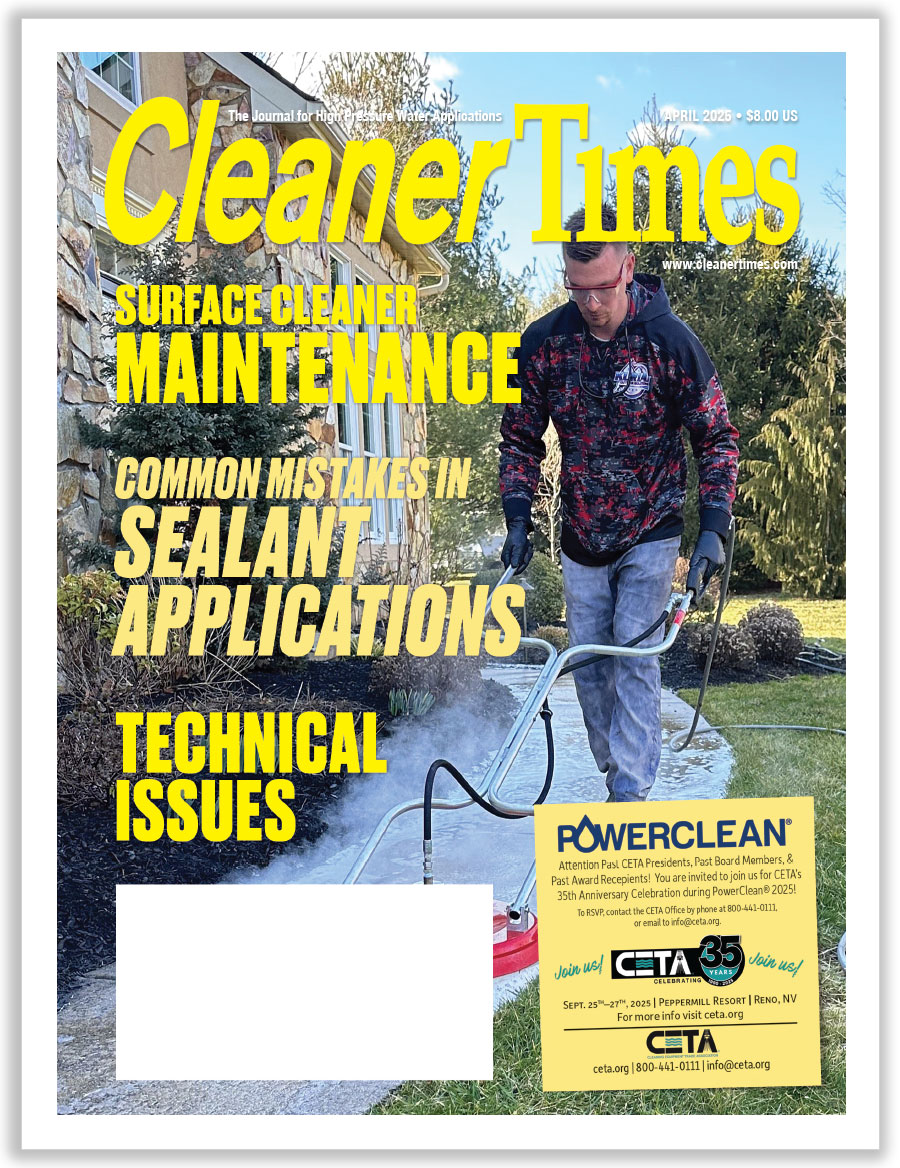
Pressure Washer Maintenance Made Easy
By Dan Leiss / Published August 2016

Because of tough industry demands, experienced cleaning professionals realize that a quality pressure washer is worth every penny even if it does cost quite a bit more than the cheapest machine available. However, just because a high-end pressure washer is tough doesn’t mean it won’t need a bit of TLC now and then. Although the steps are fairly basic, too many contractors forget to take good care of their pressure washers. With this in mind, it may be about time to start putting some pressure on your maintenance program.
Points On Parts
Before beginning a maintenance program, become familiar with the parts of the machine. While all pressure washers do not have the same parts, they all contain basics such as a pump, unloader, relief valve, hose, and gun assembly. They will also have either a motor or engine. Hot washers have extra parts that cold washers do not, including a heating coil and float tank. Refer to the owner’s manual for detailed descriptions and diagrams.
Some pressure washers require more maintenance than others. For instance, some of the cheapest units on the market are practically disposable. They are lubed for life—meaning they aren’t designed to have the oil changed or have other types of regular maintenance performed. Once these machines die, there is little hope for resuscitation. Professional units are much more maintenance-friendly.
Day-To-Day Basics
A pressure washer should be looked over daily. Take a few minutes to inspect the high-pressure hose and supply hose for leaks, kinks, cuts, abrasions, or bulges. On electric units, check the GFCI drop cord for visible damage.
Before starting the unit, always check the pump oil and adjust to the correct level if necessary. If the machine is gas powered, use this opportunity to check the engine oil and fuel levels. Also, flush the water system before installing the pressure tip at the end of the gun assembly to prevent any existing materials from clogging.
If any detergent was used, be sure to clean out the soap compound by running clear water through the injector before storing the unit.
Not-So-Everyday Basics
Daily preventive maintenance is the best way to extend the life of a pressure washer, but don’t neglect less frequent procedures. Depending on how often the machine is used, these checks may need to be done weekly, monthly, or just once or twice a year.

Check the hose and fittings for any water leaks, and if a leak exists, simply change the hose or fitting. Safety first: shut the machine off before attempting to fix leaks, as this leaking water is still under high pressure and can injure the operator.
Next, every machine has a pump, but there are two drive types that turn the pumps: belt or direct. Although belt-driven machines are designed to last longer than direct-driven, the latter are coupled directly to the engine crank-shaft and require no special maintenance. On the other hand, belt driven models should be checked occasionally for wear and proper tension of the belts.
For portable units, periodically inspect tires and give them a quick cleaning to remove caked-on mud or other material. Then check to make sure they are properly inflated and have adequate bearing lubrication.
If an engine powers the unit, remember that the engine has maintenance requirements of its own, including oil and air filter checks. Refer to the separate engine owner’s manual for further information.
When Things Go Wrong
Besides routine maintenance procedures, it’s also a good idea to know some basic troubleshooting techniques. In many cases, the problem stems from a clogged or dirty part, and a simple cleaning or part replacement will solve it.
Strange noises signal a variety of concerns. A noisy pump could mean the inlet screen and float tank screen are plugged, which can be fixed with a simple cleaning.
A noisy pump can also signal a lack of oil, and different noises signal different problems. For instance, a chattering sound means water is too hot or the water supply is too low. A vibrating noise can indicate air in the system or the possibility that debris is stuck in the valves. If the engine is making abnormal sounds, check the oil level and adjust, if necessary.
A loss of engine power is another issue. In this case, a dirty or clogged air filter is a likely culprit. Check the filter and clean or change it. An area that may become clogged on hot washers is the heating coil, which when not cleaned regularly can experience lime build-up. Simply use cleaner to de-lime the coil, and water will flow at the correct level.
Off-Season Tinkering
When it’s time to prepare the pressure washer for winter storage, it’s crucial that antifreeze is run through the system because freezing water can easily destroy a pump.
 Begin by mixing an antifreeze solution for the typical winter temperatures of the area. Next, remove the pressure tip from the gun assembly. For cold-water units that do not have a float tank, a section of garden hose must be attached to the inlet of the unit. Attach a funnel to the other end of the hose and pour the antifreeze into the funnel while the unit is running. For units with a float tank, simply pour antifreeze into the tank. For both cold and hot washers, allow the antifreeze to flow through the bypass system. Then, pull the gun assembly’s trigger, and as soon as antifreeze comes out of the nozzle, the unit can be shut down. Leave the antifreeze in the system during storage.
Begin by mixing an antifreeze solution for the typical winter temperatures of the area. Next, remove the pressure tip from the gun assembly. For cold-water units that do not have a float tank, a section of garden hose must be attached to the inlet of the unit. Attach a funnel to the other end of the hose and pour the antifreeze into the funnel while the unit is running. For units with a float tank, simply pour antifreeze into the tank. For both cold and hot washers, allow the antifreeze to flow through the bypass system. Then, pull the gun assembly’s trigger, and as soon as antifreeze comes out of the nozzle, the unit can be shut down. Leave the antifreeze in the system during storage.
When the washer is ready to be used again in the spring, turn on the machine and pump out the antifreeze into a clean container. Then flush the system with clean water before operating to clear remaining antifreeze, purge internal air pockets, and help prevent motor damage.
Now that the pressure washer is good as new for the start of another season, it’s easy to see why many professionals prefer units that will withstand years of tough use, rather than going through a new one every 100 hours. It’s important to know how to keep pressure washers in top shape because these machines should be indispensable to your operation and not disposable.
Dan Leiss is President of Jenny Products Inc.




